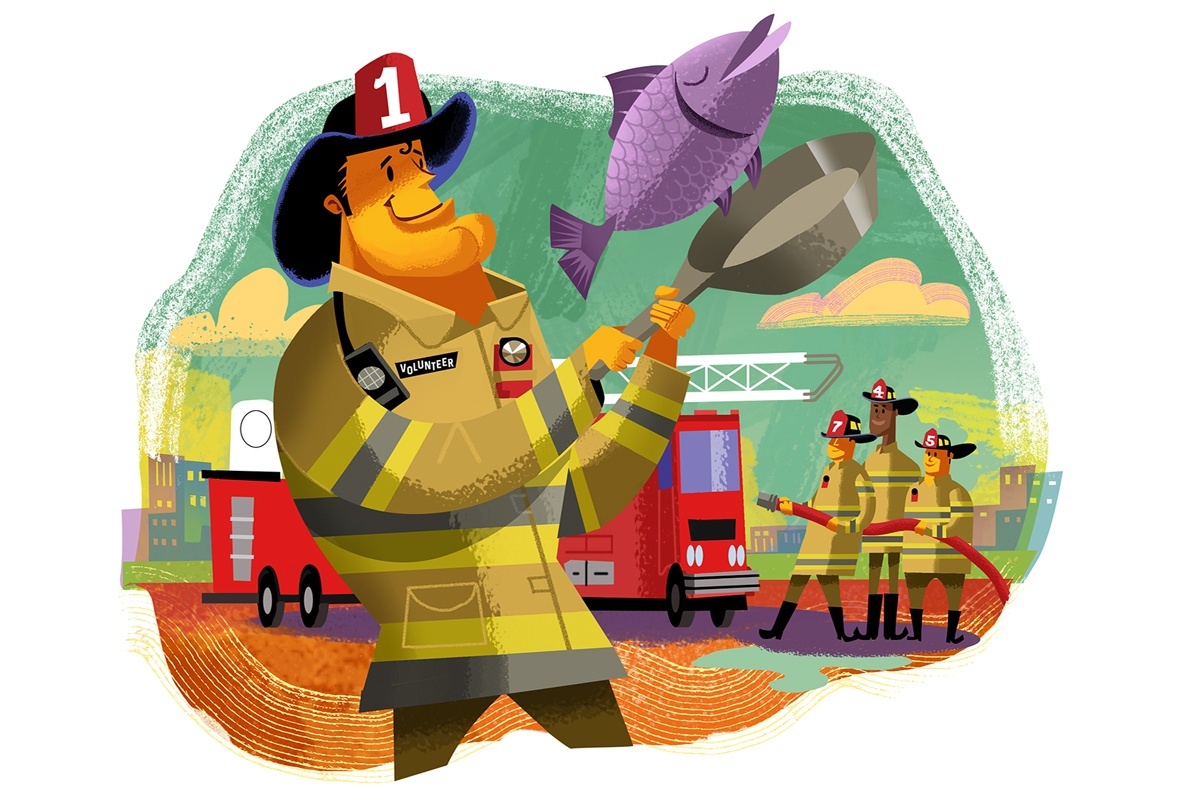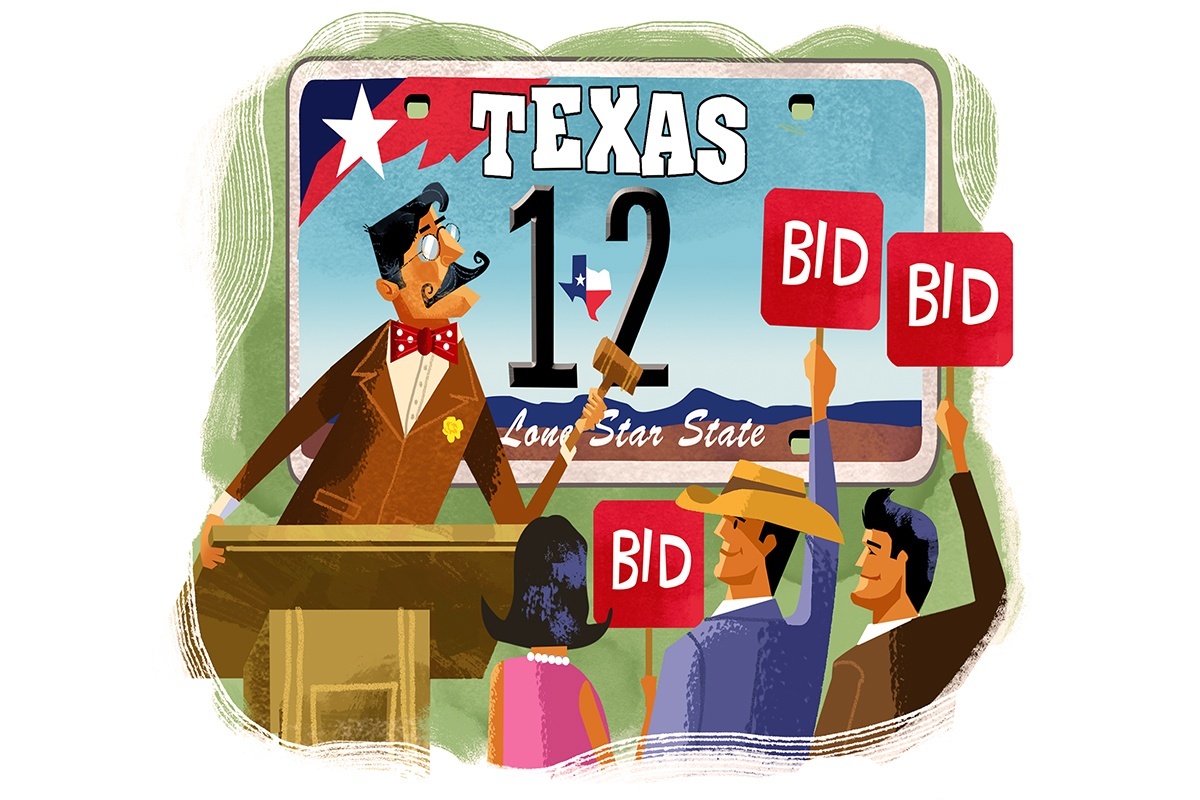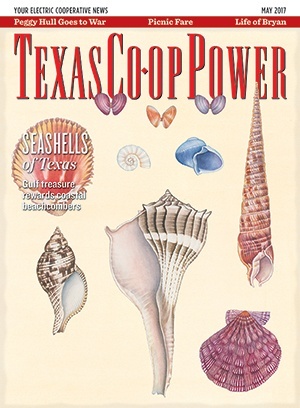Volunteer fire departments rely on fundraisers to cover equipment and operating expenses. Quite often, fish fries lure in donors. Drivers who want customized vehicle tags contribute to the state’s general revenue fund with each vanity purchase.
Cast of Volunteers
Most Texas Fire Departments are nonprofit entities that receive no taxpayer funding. That’s why many hold regular fundraisers, such as the Bleiblerville Volunteer Fire Department Fish Fry, which includes a live auction.
The annual fish fry–the 2017 event is May 21–collects money for equipment and operating expenses for the 35-member fire department in north Austin County, says Steve Doty, the VFD’s president and a member of Bluebonnet Electric Cooperative. In addition, Bleiblerville benefits from Texas A&M Forest Service funding for its participation in mutual aid services and has received grants from Bluebonnet and San Bernard ECs.
Three members of the Bleiblerville VFD are employees at San Bernard EC. John Spiess, the member services supervisor at the co-op, is a volunteer firefighter in Industry, and he says a dozen or more of his fellow employees serve as volunteer firefighters in the area.
Volunteers operate about 75 percent of Texas’ fire departments.
Bonds of Matrimony
Fifty years ago—for the first time in Texas—it became legal for married women to buy and sell their own real property and securities.
Dallas attorney Louise B. Raggio helped draft the Texas Marital Property Act of 1967, which gave women the right to own property, secure bank loans and start businesses without their husbands’ consent, according to the State Bar of Texas.
Referring to a woman’s lack of rights under Texas law before 1967, Raggio once said, “It was idiots, convicts, minors and married women who didn’t have property rights.”
Worth Repeating
“Magic—that’s just a label, you know. Completely meaningless. It wasn’t so very long ago that people were saying that electricity was magic.”
— Robert Bloch, 20th-century American fiction writer, best known as the author of Psycho
There Once Was a Rhyme About Texas
May 12 is National Limerick Day. Limericks are notoriously off-color, but an online search found this printable poem with a Texas tint:
A gorgeous young lass from Decatur
Longed for a career in theater.
On stage she was bad
So the audience got mad
And hit her with a rotten tomater.
From Viagra, Prozac and Leeches (iUniverse, 2006) by Don Ramon
Pull Over, Austin
You’ve been passed by. “AUSTIN” was expected to be the big prize when My Plates put 50 specialty Texas license plates up for auction in November 2016. But “12” sold for $6,250. AUSTIN was second in the bidding at $4,900.
Why 12? Steve Farrar, president of My Plates, says 12 was the lowest number available, and it holds a special place in the hearts of Texas Aggies, who are proud of their 12th Man tradition in football.
It’s a rich tradition. The most expensive plate ever sold in Texas is “12THMAN”—for $115,000 in 2013.
Who’s no. 1? My Plates says its first single-digit number plate will be auctioned this year.
Did You Know?
Vanity pays. My Plates sales have put more than $47 million in the state general revenue fund since November 2009.
He’s a Specimen
Bill Thompson has discovered 46 species of extinct organisms since he began hunting for fossils in Central Texas in the 1970s, but the remains of a 110 million-year-old sea urchin he found in a quarry north of Canyon Lake have taken on a special meaning.
Tetragamma donaldtrumpi—named for President Donald Trump—is Thompson’s way of honoring the commander in chief.
“When you’ve got 46 to name, you have to come up with a lot,” says Thompson, a member of Guadalupe Valley Electric Cooperative who also has named a fossil for one of his children and another for a friend.
90-Day Wonders
When the U.S. declared war on Germany and entered World War I in April 1917, an urgent need for officers for combat leadership arose.
In May of that year, the War Department opened 16 officer training camps around the country, including one at Camp Funston in Leon Springs near San Antonio. After three months of intense training, nearly 2,000 graduated from Camp Funston as officers.
The trainees at these camps became known as “90-day wonders.” Camp Funston is now called Camp Stanley.



